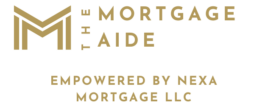Month 1–3: Get Organized & Assess Where You Stand
1. Check Your Credit Report and Score
Lenders will review your credit history closely, so it’s crucial to know what they’ll see.
Get a free report from AnnualCreditReport.com.
Review for errors and dispute anything inaccurate.
Aim for a credit score of at least 620 for conventional loans — 740+ will get you the best rates.
2. Analyze Your Budget
Start tracking your spending to figure out what you can comfortably afford. Use this time to:
Identify spending leaks.
Estimate your monthly mortgage payment using online calculators.
Understand the “hidden” costs of homeownership (taxes, insurance, maintenance).
Month 4–6: Build Your Savings & Pay Down Debt
3. Save for a Down Payment and Closing Costs
The more you can save, the more flexibility you’ll have.
FHA loans may require as little as 3.5% down.
Conventional loans start around 3–5% down for qualified buyers.
Closing costs usually range from 2% to 5% of the purchase price.
Tip: Set up a dedicated “house fund” savings account and automate deposits.
4. Reduce Your Debt-to-Income Ratio (DTI)
Your DTI plays a major role in how much home you can afford.
Focus on paying down high-interest debt (like credit cards).
Avoid taking on new debt.
Keep your credit utilization under 30%.
Month 7–9: Get Pre-Qualified & Research Lenders
5. Talk to a Mortgage Professional
This is when you want to get pre-qualified — it’s an informal estimate of how much home you can afford.
A loan officer can help identify red flags in your finances now (before you’re ready to apply).
Ask about different loan types, down payment assistance programs, and first-time buyer perks.
6. Continue Strengthening Your Finances
Avoid large purchases or opening new lines of credit.
Keep making on-time payments.
Consider working with a credit coach or financial advisor if your score still needs work.
Month 10–12: Get Pre-Approved & Prepare to Shop
7. Get Pre-Approved for a Mortgage
Unlike pre-qualification, a pre-approval is a conditional commitment from a lender based on verified financial info.
It makes your offer more attractive to sellers.
It gives you a clearer homebuying budget.
8. Budget for Ongoing Costs
Start building a cushion for moving costs, furnishings, and future repairs.
If you haven’t already, practice “paying” your future mortgage by putting the difference into savings each month.
Final Thoughts:
Preparing to buy a home in 12 months isn’t just possible — it’s powerful. The key is to start early, stay consistent, and take smart financial steps month by month. Your future self (and your future home) will thank you for it.
Bonus: Want a personalized roadmap based on your current finances? Reach out and let’s schedule a quick pre-qualification call to map out your homeownership goals.




